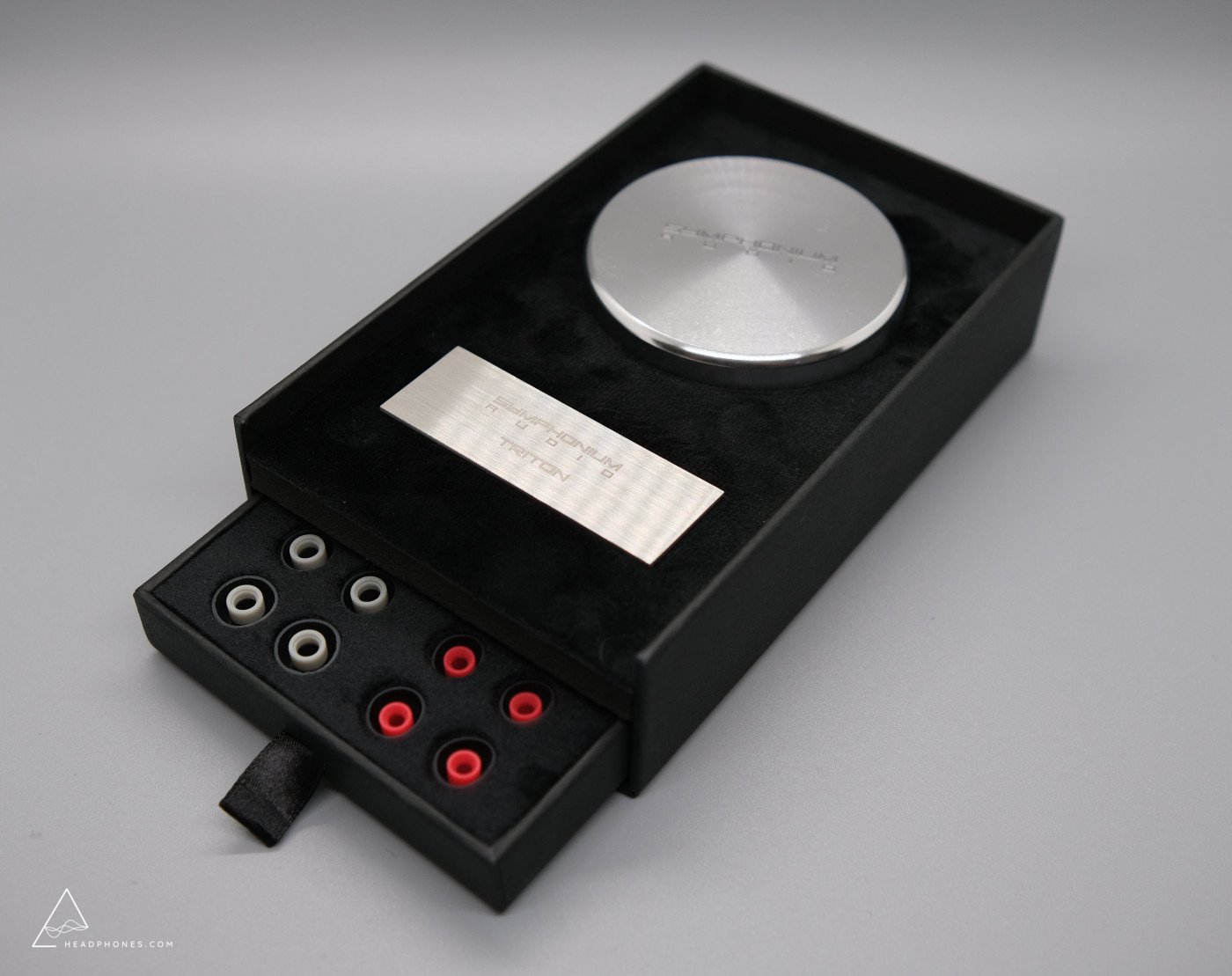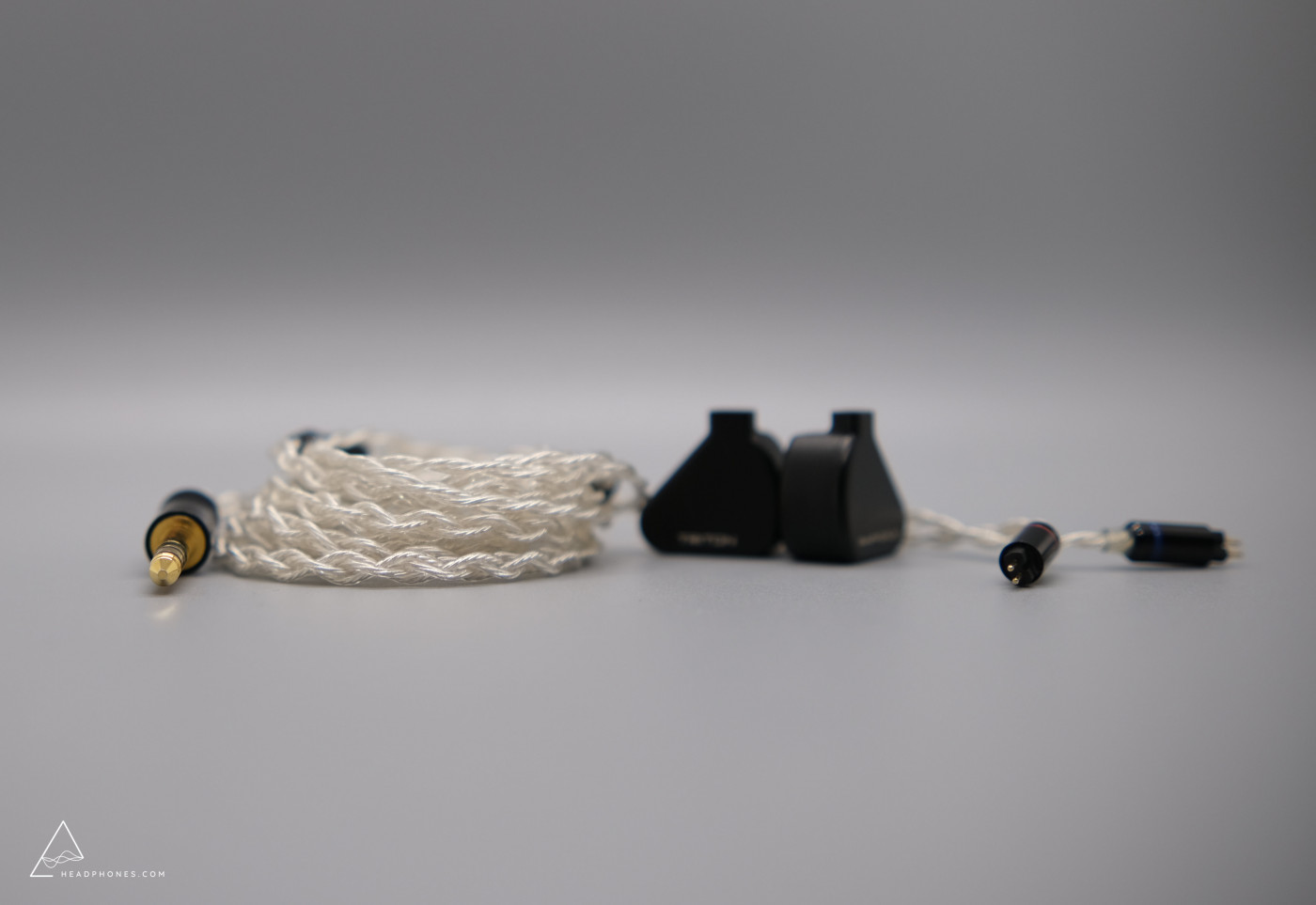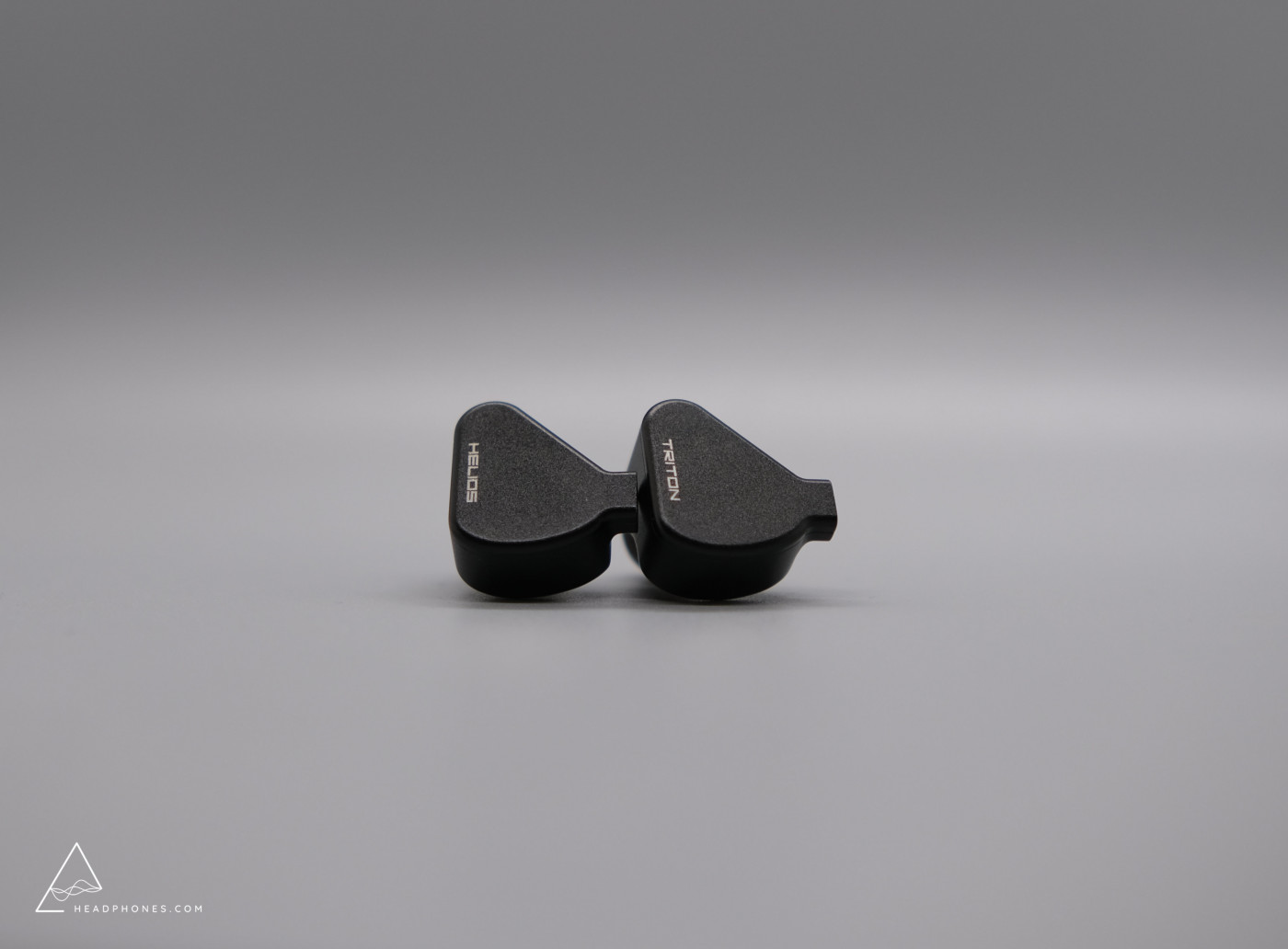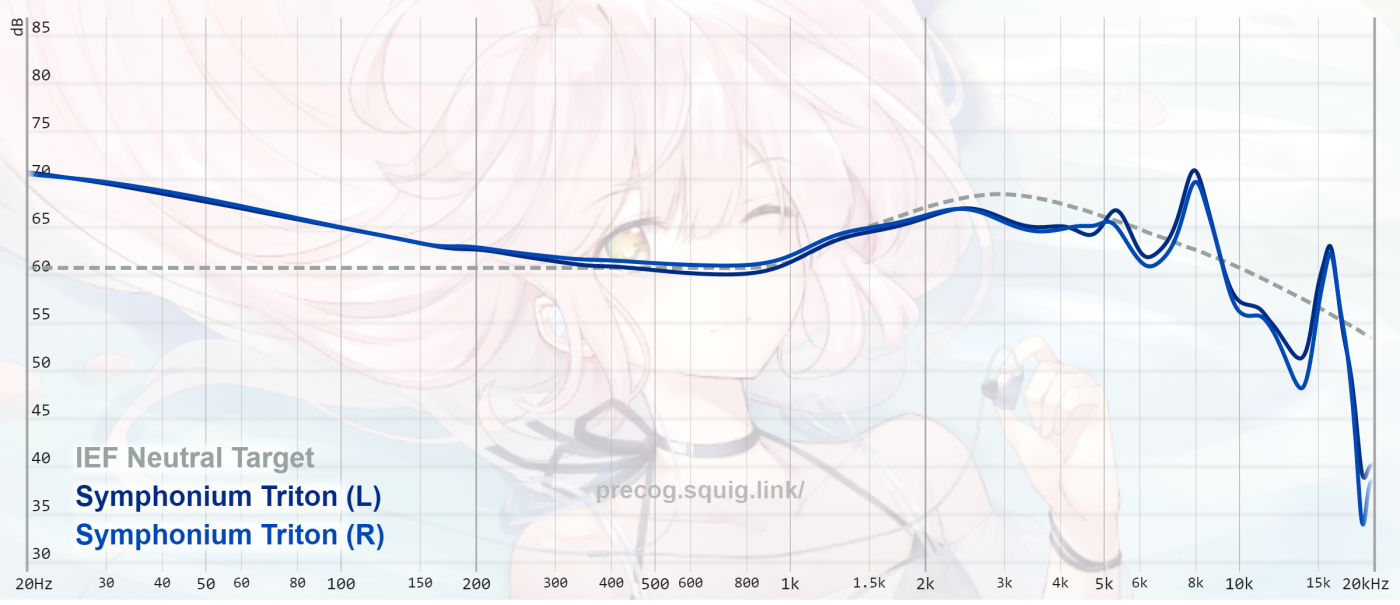Symphonium Triton Review - Lush and (Luke)warm

Introduction
Symphonium Audio is a brand that hails from Singapore and that consists of a small team of enthusiasts. They often work together with Subtonic, another small team that contributes expertise on tuning and sound design. I had the opportunity to meet both parties at CanJam SG 2022 and brought back with me a demo unit of their latest IEM, the Triton. Consistent with the low driver count of Symphonium Audio's current halo model, the Helios ($1099), the Triton ($899) is a 1DD/2BA configuration that aims to reject the driver wars paradigm (i.e., the notion that more drivers correspond to better sound). I recall being very impressed with the performance of the Helios (to the point of which I bought my own unit), so it follows that the question of whether the Triton lives up to the subsequent high bar is at hand.
This unit was loaned for review as part of a tour by Symphonium Audio. It will be sent to the next participant after. As always, what follows are my honest thoughts and opinions to the best of my ability.
Source & Drivability
All critical listening was done off an iBasso DX300 with lossless files. The stock cable and silicone ear tips were used. The Triton takes a moderate amount of power to drive, but I had no issue hitting my usual listening volumes (~70dB). If you'd like to learn more about my listening methodology, test tracks, and general beliefs in audio, then I would encourage you to check out this page.
The Tangibles

The Triton arrives in a discreet, black cardboard packaging. Upon removing the outer sleeve and cover, you'll be greeted with the Triton's aluminum case nested in the center and a small assortment of accessories in a panel that slides out from the bottom. Here's what's included in total:
- 3x Azla SednaEarfit tips
- 3x Symphonium Audio silicone tips
- Aluminum hockey-puck style case
- Metal placard with SN
- 0.78mm 2-pin cable
- Cleaning tool

I wish some more care was put into the hockey-puck case. I like the general build of it, and the large O-ring is a unique touch for waterproofing, but the threading could use some work. It's a tad screechy and it has a tendency to cross-thread when I'm initially screwing it on. Just something that I watch out for as someone who's played with a lot of high-quality knives, flashlights, and gear of that nature. The included cable is a standard 2-pin 0.78mm one, but it does not have pre-formed ear hooks. I believe that this is the same cable that came with the Helios, but this time with silver plating.

The Triton shares the same large shells as the Helios. Personally, I don't have any comfort issues with these shells, and I appreciate the above average isolation, but I know that won't be the case for everyone - the fit was the most common complaint by listeners of the Helios at CanJam SoCal. On the bright side, the shells are quite robust thanks to their 6061-T6 aluminum construction and hard anodization. I've banged my Helios around plenty, and they're no worse the wear for the abuse. In reality, the biggest concern that I can see with the Triton's build is not to do with the IEM itself, but with the cable and the continued use of the elongated 2-pin connectors which are susceptible to being bent unintentionally.
Sound Analysis
The measurement below was taken off of a clone IEC-711 coupler. There is a resonance peak at 8kHz; as such, measurements after that point should not be considered entirely accurate. You can visit this link to compare the Triton to other IEMs that I've measured.

In general, the Triton's sound is warmer, more intimate, and most of all - smooth. It takes the sound of the Helios - which could be a tad rough around the edges in terms of tuning - and conveys a more coherent interpretation. This means filling in some of the mid-bass recession, pulling back the upper midrange slightly, and lowering the quantity of treble.
Bass on the Triton takes an interesting approach for a hybrid. Its shelf is not dissimilar to the SeeAudio Yume Midnight wherein the shelf declines in a gradual 45 degrees angle. Perceptually, I've noticed that this type of shelf has two key products: 1) it detracts from a traditional sense of slam and 2) it promotes coherency in that the presentation of the Triton does not sound distinct between its respective DD and BA drivers. I do see the merit of this tuning decision; however, subjectively, I am not as much a fan. It's just a bit strange to hear that the Triton's bass actually has a similar level of decay to the Helios. And it's the Helios generating a stronger sense of leading thock on the likes of snare drums on Oh My Girl's "Replay" for example.
A phenomenon I've noted with Symphonium Audio's IEMs is that they encourage you to listen loudly. I suspect this can be attributed to the lack of problematic peaks which would be present on most IEMs. For example, an aggressive upper-midrange or peak in the treble might force listeners to turn down the volume to avoid fatigue. By contrast, the midrange of the Triton is quite relaxed with only about 7dB of pinna gain at 2.5kHz which allows me to get away with turning up the volume without fatigue. It's also no secret that I gravitate toward these types of tunings. Vocals sound buttery smooth on the Triton, leaning tastefully thicker than neutral.
Treble on the Triton is good, but not necessarily class-leading within the context of its brethren, the Helios. It's almost too smooth: there appears to be some muting in the cymbal crash regions around 6-10kHz. Take for example Taeyeon's "Ending Credits" where I just find myself desiring more brilliance on the synths to compliment the exciting, dramatic tone of the track. Extension itself isn't really an issue, but the Triton also doesn't reach the lofty heights of the Helios' almost linear extension up to the limits of my hearing. It has some subtle roll-off after 15kHz. Like the bass and midrange, the treble of the Triton is really more reserved and there to lend a hand to a more collective presentation.
Technical Performance
The Helios was an IEM that made its mark to me for its class-leading technicalities. But that's not the Triton, as there's inevitably some trade-offs in technical performance because of its warmer tuning. It does maintain the general flavor of transient behavior. This is most evident in decay, where notes fade out without any of the sandpapery quality that's common with most BA IEMs. Outside of this, the Triton has cutbacks in imaging performance and the sense of dynamic contrast that the Helios is able to deliver. Overall, I'd say that the Triton's technical performance is competitive, but it's hanging on by a thread against the best performers in this category like the Moondrop S8 and friends.

The Bottom Line
Good, but not great. The Triton meets expectations for the criteria that I index for; however, it's difficult to knock the feeling that it's in something of an awkward position for its price bracket. It's not necessarily better than the $500-700 forerunners, and it's clearly not better than the kilo-buck forerunners. In some respects, the Triton really serves to illustrate just how damn good the Helios is, and I find myself inclined to recommend going that avenue if you want a taste of something greater, an IEM pushing the limits of what's possible with portable audio. But if you're content with a more relaxed, warm, yet reasonably balanced flavor of sound, the Triton's still a solid option.
-Precogvision
